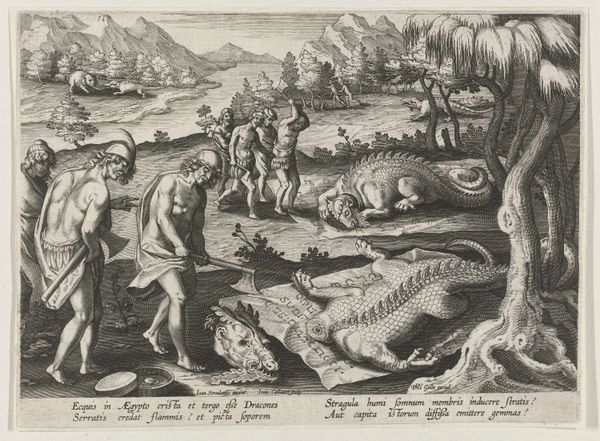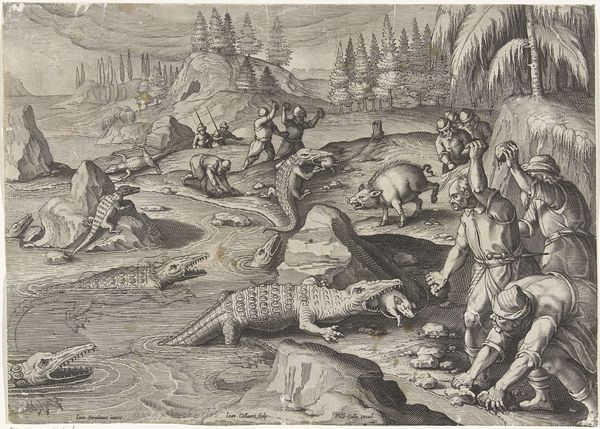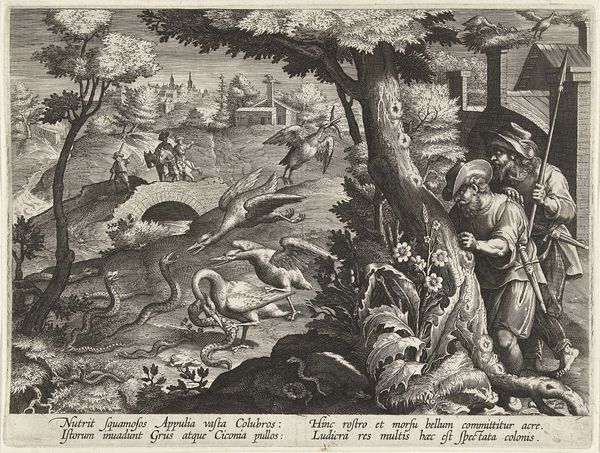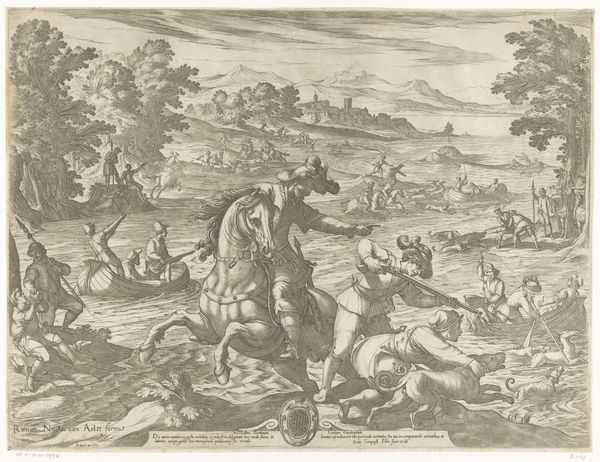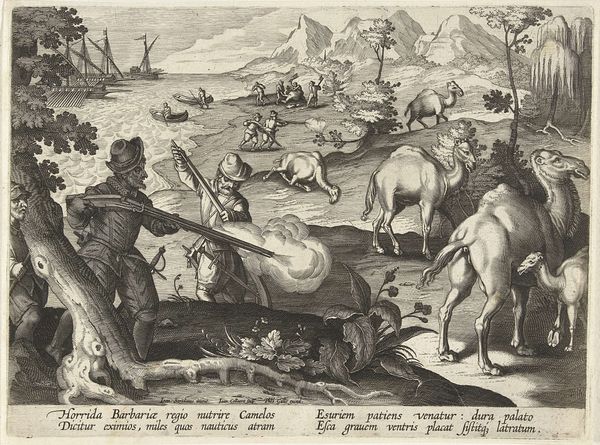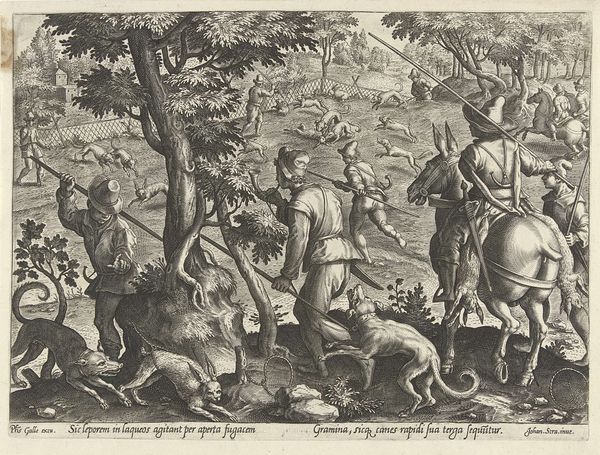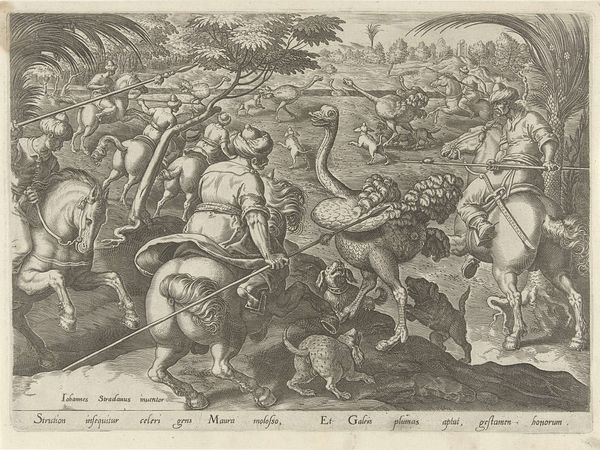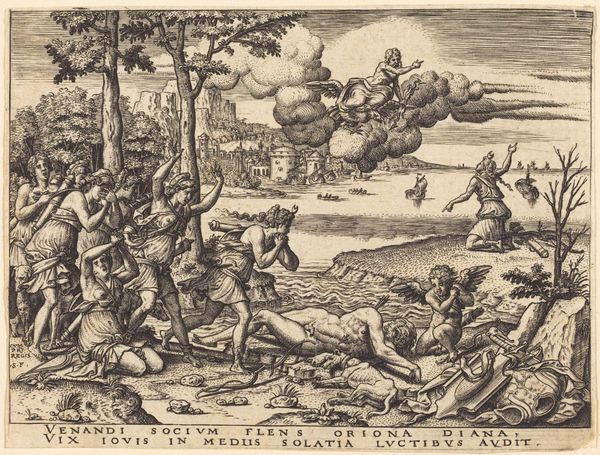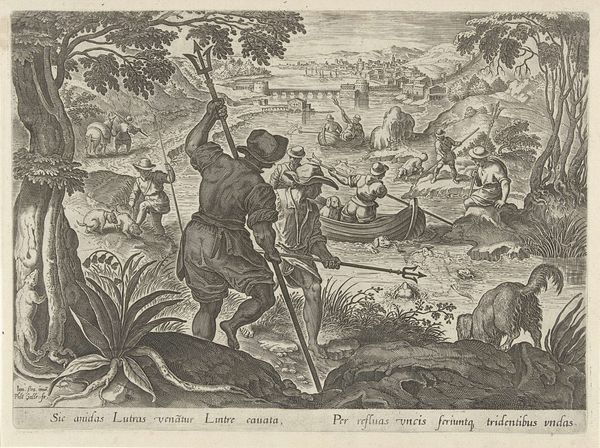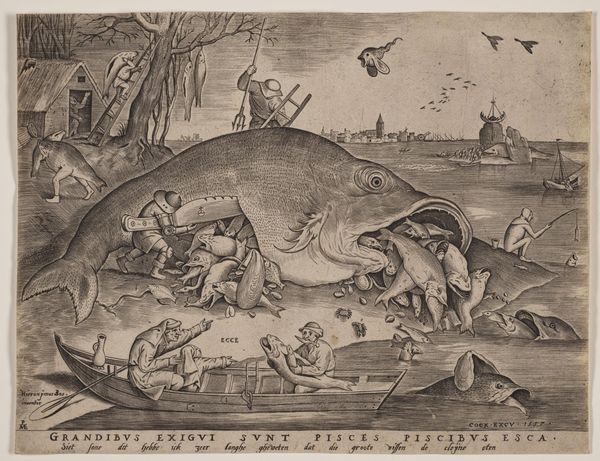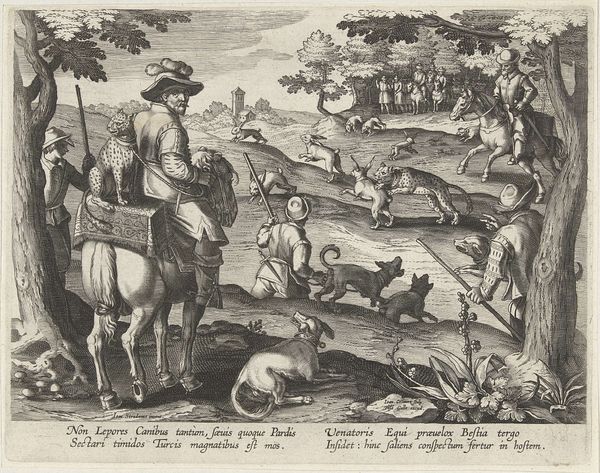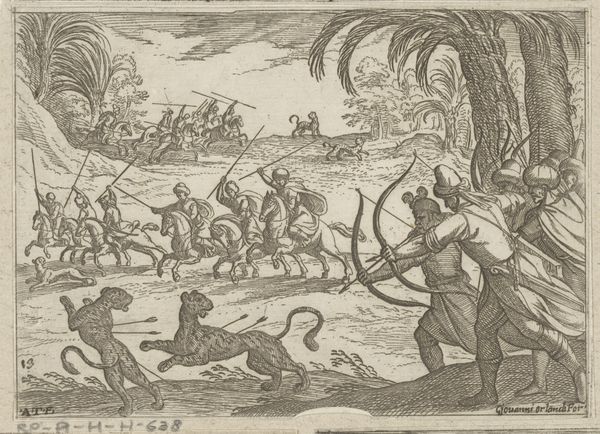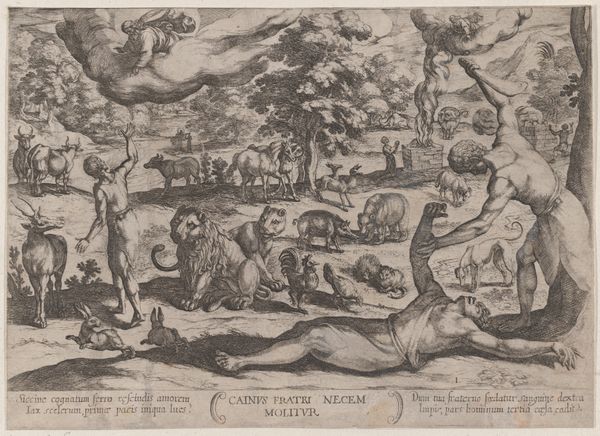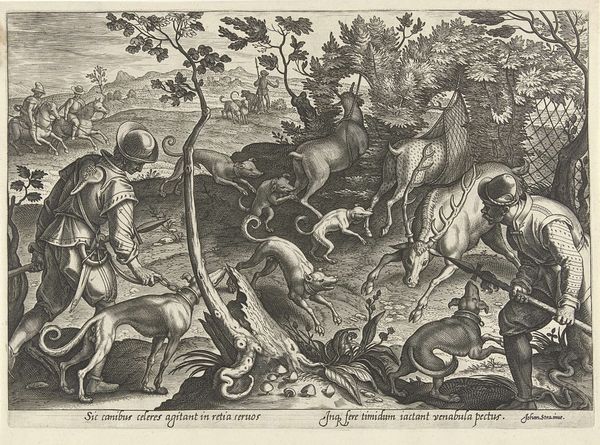
print, engraving
#
pen drawing
# print
#
landscape
#
figuration
#
11_renaissance
#
genre-painting
#
engraving
Dimensions: width 262 mm, height 202 mm
Copyright: Rijks Museum: Open Domain
Curator: Karel van Mallery's engraving, "Indians Catching Fish with the Help of Pelicans," created between 1594 and 1598, invites us into a fascinating, albeit imagined, New World scene. What strikes you initially? Editor: Well, first off, it's undeniably bizarre. These aren't just any pelicans; they're like super-pelicans, practically armored, almost comically oversized, waddling amidst these indigenous figures. The scene has a strangely dreamlike, slightly unsettling quality. Is it me, or do the people and the pelicans look related, like two brothers fishing? Curator: It’s true, they have a surreal quality, almost as if the pelicans are extensions of the fishermen. The engraving is part of a series depicting life in the Americas, and while it's clearly based on secondhand accounts rather than direct observation, it's still a valuable record of European perceptions at the time. Editor: Precisely! This isn't just a depiction of fishing; it’s an allegory of sorts. The pelicans, in their strange, almost robotic assistance, embody the European ideal of benevolent mastery over nature and its people. Look at how neatly ordered it is; the scene lacks all wild chaos; a symbol perhaps of the colonizers' intentions. The native fisherman almost seems subservient to his animal helper, in both physical position, scale, and direction of the line of action within the piece. Curator: The cultural symbolism is potent. Pelicans have long been associated with charity and self-sacrifice, feeding their young with their own blood. So, in this context, one could argue that Van Mallery uses the bird as a symbolic representation of European powers bestowing civilization upon the indigenous population, even if tinged with sacrifice. Editor: I can’t ignore how it prefigures later justifications of colonization, this “civilizing mission” cloaked in supposed selflessness, but look closely at their shared body language: they cooperate, as if in tacit agreement to change, transform. They've accepted it. I find that problematic on some level. Curator: Agreed. And this print being housed at the Rijksmuseum, with its complex history of colonialism, really asks the modern viewer to reflect critically about that narrative, don’t you think? Editor: Definitely, stepping back, seeing the bigger picture—this isn't just an image of fishing. The engraving holds a mirror up to ourselves, showing how far we've come in acknowledging the layers of history—and perhaps how much further we still have to go.
Comments
No comments
Be the first to comment and join the conversation on the ultimate creative platform.
